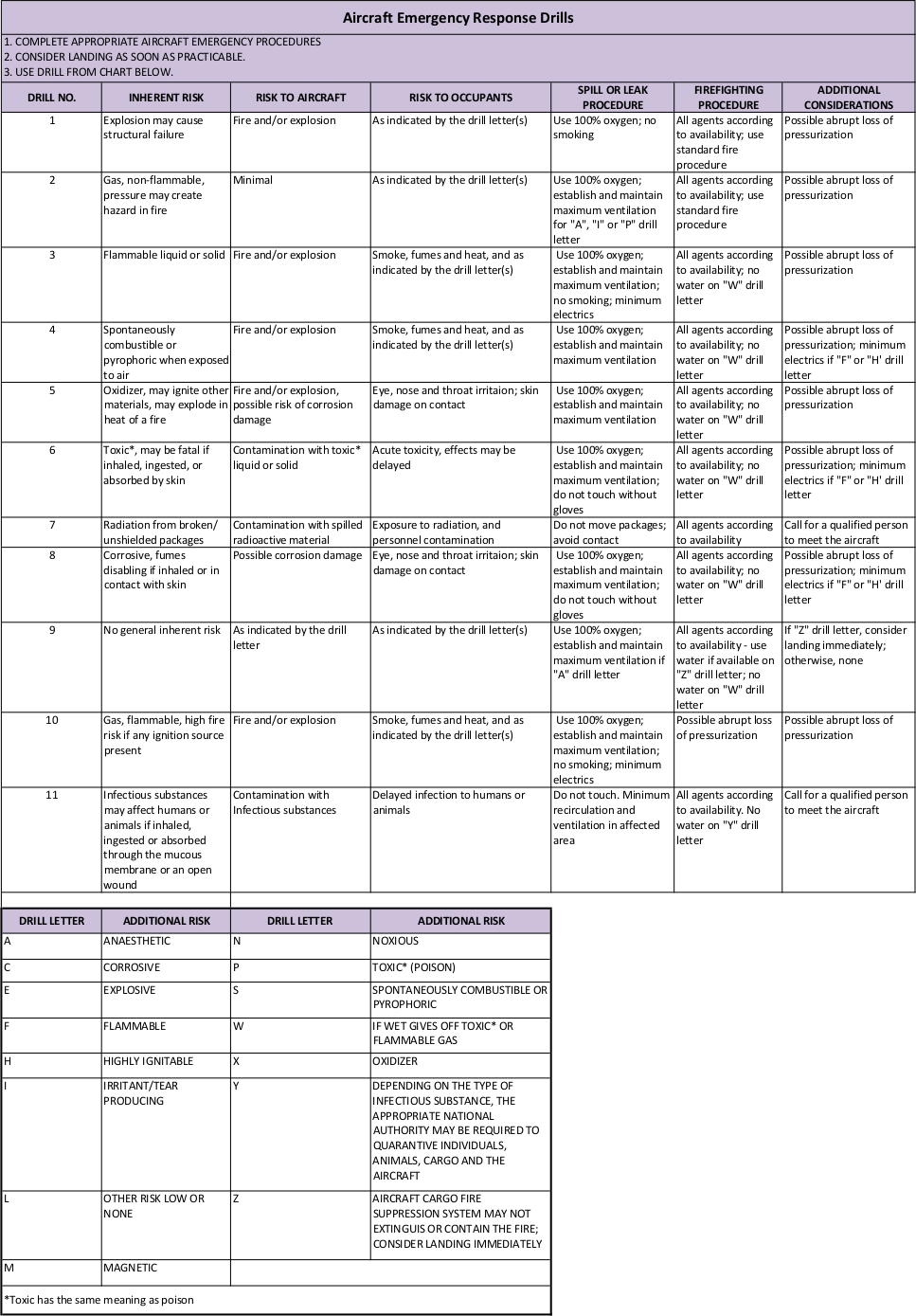Pilot In-flight Emergency Procedures
If an in-flight emergency occurs, the pilot-in-command must have emergency information immediately available. This can come in the form of the ICAO booklet titled 'The Emergency Response Guidance for Aircraft Incidents Involving Dangerous Goods'. Other documentation which provides similar information is also acceptable.
The NOTOC should also provide the Captain with an Emergency Response Code (ERC), which will assist the Captain in making an informed decision on appropriate emergency procedures.
If an in-flight emergency should occur, the pilot must inform Air Traffic Services if any Dangerous Goods are onboard the aircraft. The information must include:
- Primary hazard & subsidiary risk
- Location of Dangerous Goods aboard the aircraft
- If the situation permits, include the proper shipping name & class
The table following is an example of appropriate emergency procedures.
In-flight Aircraft Emergency Response Drill (Table 4.1 in Section 4 of ICAO 'Emergency Response Guidance for Aircraft Incidents Involving Dangerous Goods)
Cabin Crew In-flight Emergency Procedures
The following general emergency procedures need to be followed in the event of an inflight emergency involving dangerous goods for Cabin Crews.
- Immediately inform the captain
- Obtain Dangerous Goods Spill Kit & and follow the instructions contained within the spill kit.
- Stow the Dangerous Good in a safe and isolated location. An example would be to stow the dangerous good in the most aft toilet underneath the sink area and lock the toilet door.
- All incidents must be reported to the Operator's Safety Department or appropriate responsible person ASAP.
- There is a regulatory responsibility for the Operator to report all incidents to CASA within two (2) working days!



